Question
Questions 1. As the communications director for the company, what course of action would you take after you hear of the enraged father visiting one
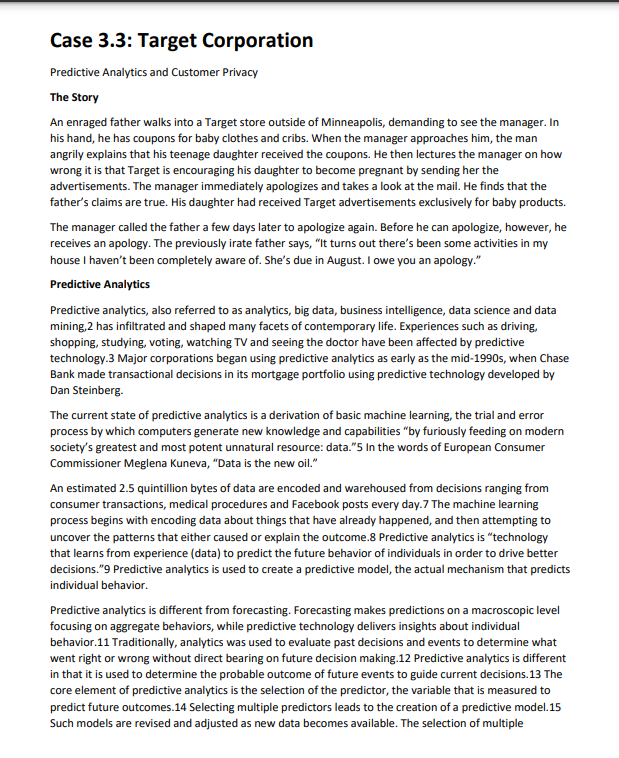
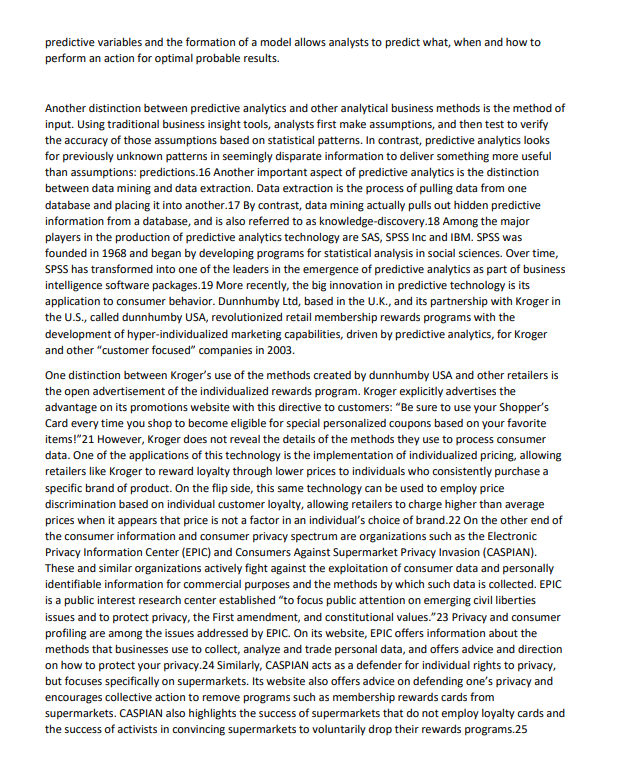
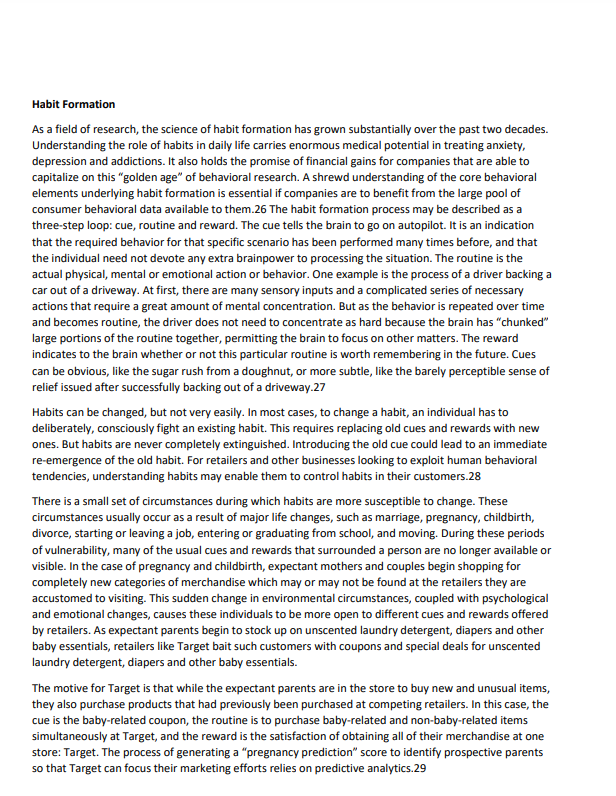
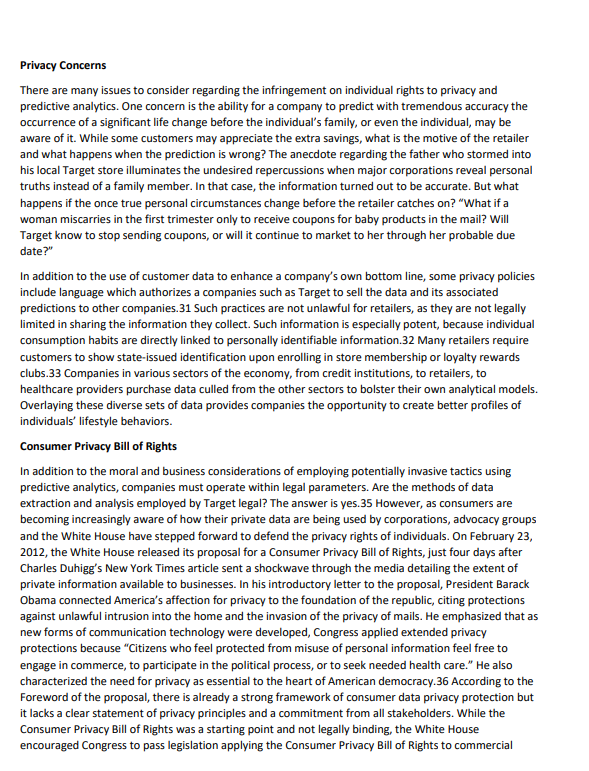
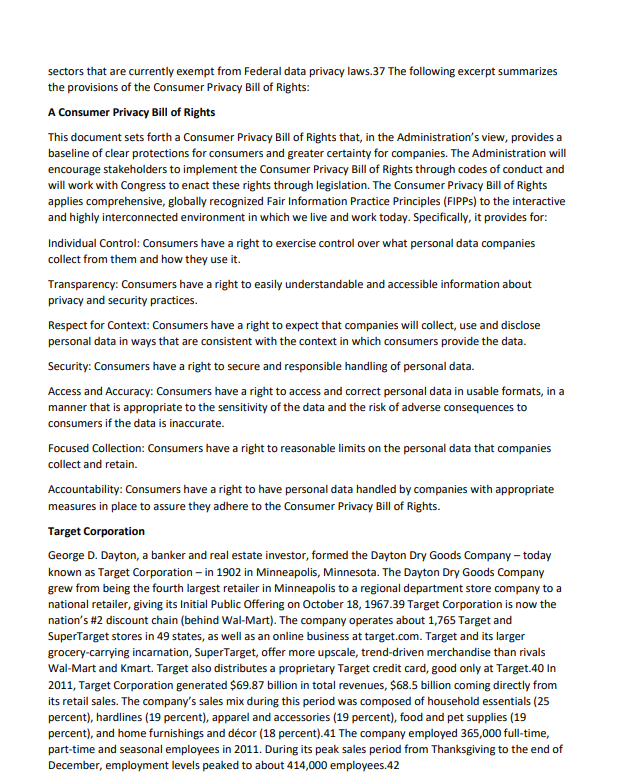
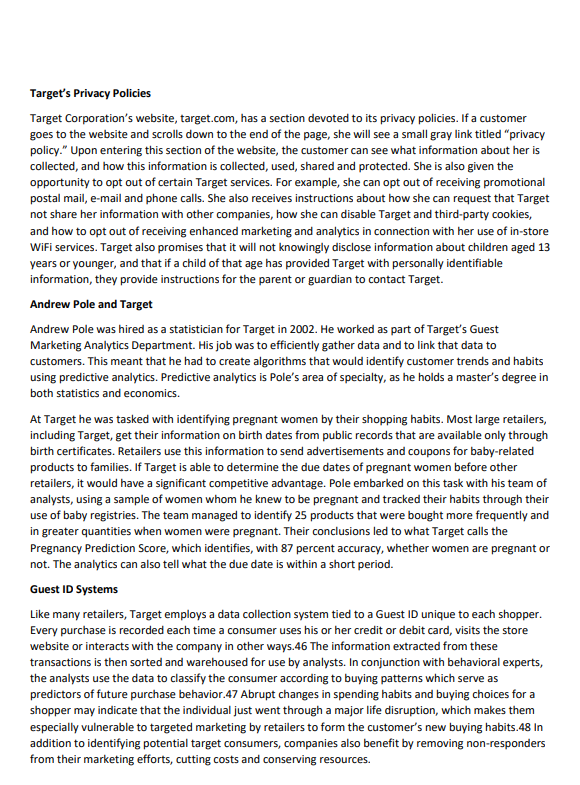
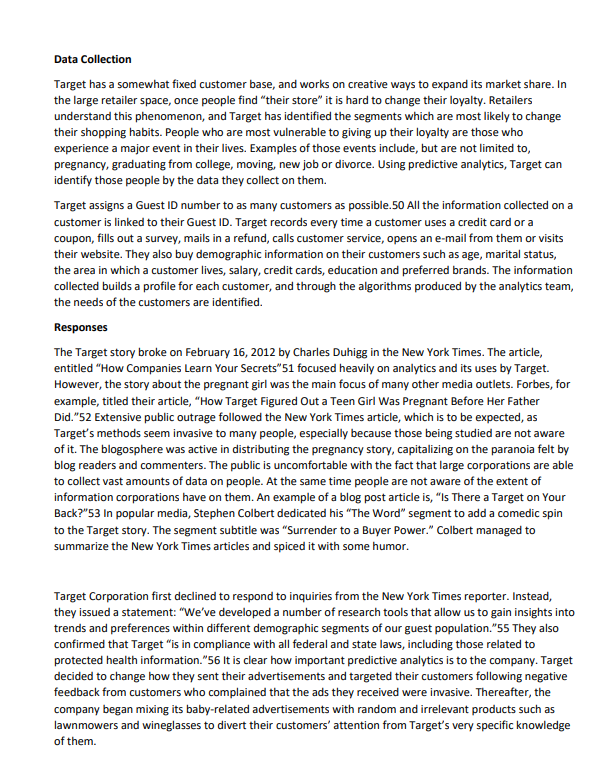
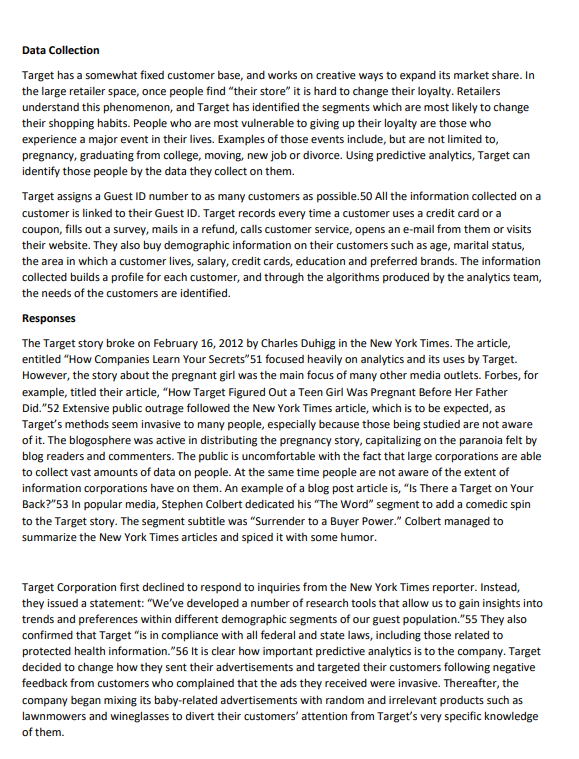
Questions
1. As the communications director for the company, what course of action would you take after you hear of the enraged father visiting one of Target's stores?
2. At the time of the incident, headlines about Target, consumer privacy, predictive analytics and teen pregnancy were not yet racing through media outlets. But, such a sensational story is ripe for media attention. What will happen if a major, trusted news outlet learns about the incident and publicizes trade secrets? Will the company itself become a target for media and consumer backlash?
3. How much do consumers actually know and understand about how their data is used by Target? Is knowledge power for Target's customers, or is it better that they remain unaware?
4. How much should store-level employees know and understand about Target's data collection policies?
5. How much should a company reveal about its data collection practices to the public? Would disclosure neutralize Target's competitive advantage?
6. Should warning labels or informative signage be displayed at the point of purchase to warn/educate customers about the ramifications of using rewards/member cards programs and credit/debit cards?
7. The decision point in this case occurs just after the pregnant teenager incident. As the communications director for Target, how would you respond after the New York Times article was published?
8. Given the financial potential from using data mining and predictive analytics, should Target fight against legislation that would limit the use of such data?
Case 3.3: Target Corporation Predictive Analytics and Customer Privacy The Story An enraged father walks into a Target store outside of Minneapolis, demanding to see the manager. In his hand, he has coupons for baby clothes and cribs. When the manager approaches him, the man angrily explains that his teenage daughter received the coupons. He then lectures the manager on how wrong it is that Target is encouraging his daughter to become pregnant by sending her the advertisements. The manager immediately apologizes and takes a look at the mail. He finds that the father's claims are true. His daughter had received Target advertisements exclusively for baby products. The manager called the father a few days later to apologize again. Before he can apologize, however, he receives an apology. The previously irate father says, "It turns out there's been some activities in my house I haven't been completely aware of. She's due in August. I owe you an apology." Predictive Analytics Predictive analytics, also referred to as analytics, big data, business intelligence, data science and data mining,2 has infiltrated and shaped many facets of contemporary life. Experiences such as driving, shopping, studying, voting, watching TV and seeing the doctor have been affected by predictive technology.3 Major corporations began using predictive analytics as early as the mid-1990s, when Chase Bank made transactional decisions in its mortgage portfolio using predictive technology developed by Dan Steinberg. The current state of predictive analytics is a derivation of basic machine learning, the trial and error process by which computers generate new knowledge and capabilities "by furiously feeding on modern society's greatest and most potent unnatural resource: data."5 In the words of European Consumer Commissioner Meglena Kuneva, "Data is the new oil." An estimated 2.5 quintillion bytes of data are encoded and warehoused from decisions ranging from consumer transactions, medical procedures and Facebook posts every day.7 The machine learning process begins with encoding data about things that have already happened, and then attempting to uncover the patterns that either caused or explain the outcome.8 Predictive analytics is "technology that learns from experience (data) to predict the future behavior of individuals in order to drive better decisions."9 Predictive analytics is used to create a predictive model, the actual mechanism that predicts individual behavior. Predictive analytics is different from forecasting. Forecasting makes predictions on a macroscopic level focusing on aggregate behaviors, while predictive technology delivers insights about individual behavior.11 Traditionally, analytics was used to evaluate past decisions and events to determine what went right or wrong without direct bearing on future decision making.12 Predictive analytics is different in that it is used to determine the probable outcome of future events to guide current decisions. 13 The core element of predictive analytics is the selection of the predictor, the variable that is measured to predict future outcomes.14 Selecting multiple predictors leads to the creation of a predictive model.15 Such models are revised and adjusted as new data becomes available. The selection of multiple
Step by Step Solution
3.30 Rating (147 Votes )
There are 3 Steps involved in it
Step: 1
1 As the communications director for Target Corporation upon learning about the enraged fathers visit I would take the following comprehensive course of action 1 Immediate Response Acknowledge the Iss...
Get Instant Access to Expert-Tailored Solutions
See step-by-step solutions with expert insights and AI powered tools for academic success
Step: 2

Step: 3

Ace Your Homework with AI
Get the answers you need in no time with our AI-driven, step-by-step assistance
Get Started


